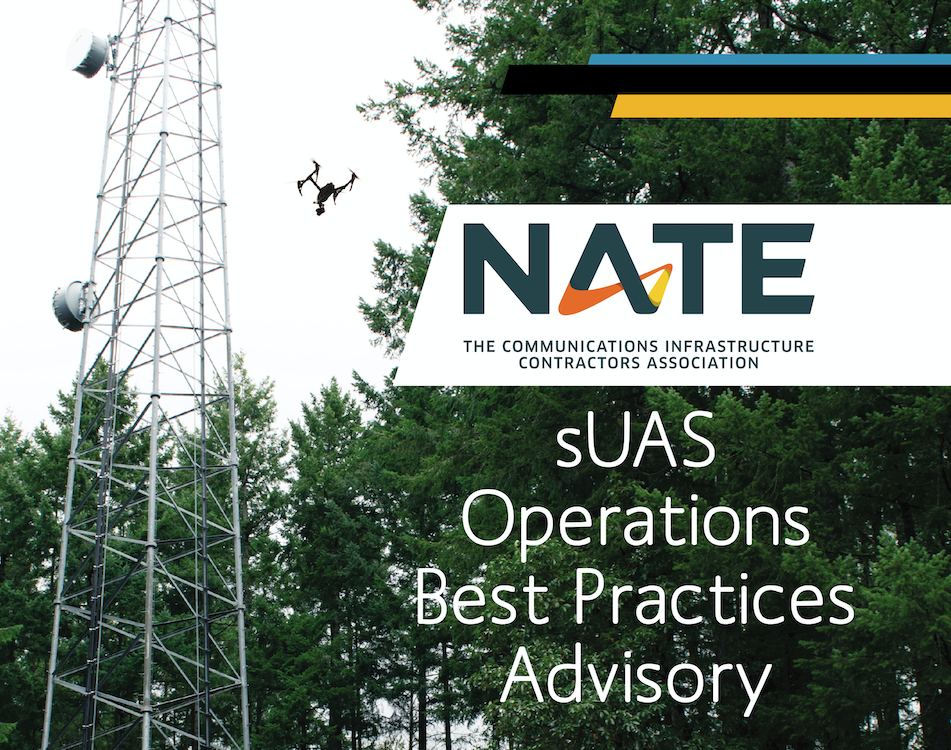Commercial UAV News has often talked about the value that drones are providing for infrastructure inspections from inspecting stacks for gas leaks to assessing power and communications grids, but how these inspections are run are often left up to individual companies to figure out. With varying approaches and procedures, there is little standardization and that can mean potential risks could be overlooked and left unaccounted for. With the release of its sUAS Operations Best Practices Advisory resource, NATE: The Communications Infrastructure Contractors Association, is changing that for communications infrastructure inspections.
By providing the industry with an in-depth document on everything from safety policy and reporting to pre-flight checks and emergency procedures, NATE, a non-profit trade association, is helping to standardize the industry’s approach to drone operations.
“The Association is excited to officially unveil this NATE sUAS Operations Best Practices Advisory resource document to the industry today,” stated newly appointed UAS Committee Chairman Bryan McKernan of Consortiq in Annapolis, Maryland. “NATE is a prominent leader when it comes to the integration and safe utilization of UAS around communications infrastructure and these guidelines can play a major role in providing the industry’s wireless carriers, vertical realtors, contractors and technicians with a go-to resource to help standardize the training requirements and operator processes in the industry. NATE’s goal is for this new resource to ultimately serve to help scale commerce drone use in the industry in order to maximize the many benefits of this technology.”
These kinds of industry-specific resources are important for establishing best practices that are aligned with established workflows and processes, especially in industries like communications infrastructure where complex safety and operational procedures already exist.
















Comments